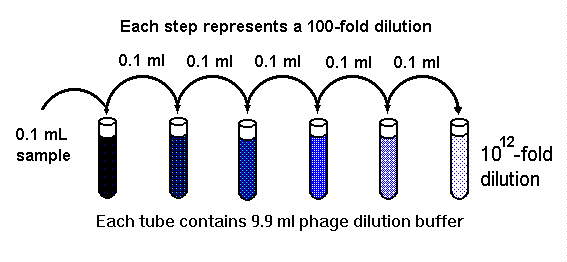고정 헤더 영역
상세 컨텐츠
본문


Prepare several test tubes with 9 mL of dilution liquid. These tubes will serve as your dilution blanks. You will be adding your undiluted sample to the first tube and then serially diluting into the following tubes. It’s helpful to label all of your tubes before you begin so you don’t get confused once you begin with the dilutions. Each tube will be a 10-fold dilution starting from the undiluted tube.
5 Fold Serial Dilution
The first tube will be a 1:10 dilution, the second a 1:100, the third a 1:1000, etc. Determine the number of dilutions you need to do beforehand so you don’t waste tubes or diluting liquid.
To perform a serial dilution, a small amount of a well-mixed solution is transferred into a new container and additional water or other solvent is added to dilute the original solution. The diluted sample is then used as the base solution to make an additional dilution. Doing this several times results in a range of concentrations.The initial concentration and target range needed for a given assay determines the size and number of dilution steps required. Often, serial dilutions are performed in steps of 10 or 100. They are described as ratios of the original and final concentrations. For example, a 1:10 dilution is a mixture of one part of a solution and nine parts of additional solvent. To make a 1:100 dilution, one part of the solution is mixed with 99 parts of additional solvent.Mixing 100 µL of a stock solution with 900 µL of water makes a 1:10 dilution.
The final volume of the diluted sample is 1000 µL (1 mL) and the concentration is 1/10 that of the original solution. This is commonly referred to as a 10x dilution.The illustration above follows the relationship between volume of solvent, number of molecules of solute and concentration of a solution over a set of 4 dilutions. The concentration can be tracked in M which is a common unit for chemistry, or particles per ml, which is common when diluting bacterial cultures to low concentrations. With molar concentrations it is safe to assume that the solute is evenly dispersed through the solution such that the concentrations change predictably with each dilution. With particles, like bacterial cells, the solution becomes patchy at low concentrations and actual concentration can diverge from the expected concentration.Test your understanding with theVideo OverviewRelated Content.




